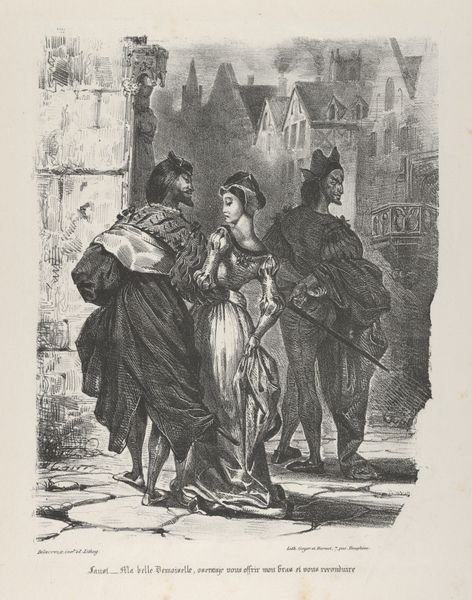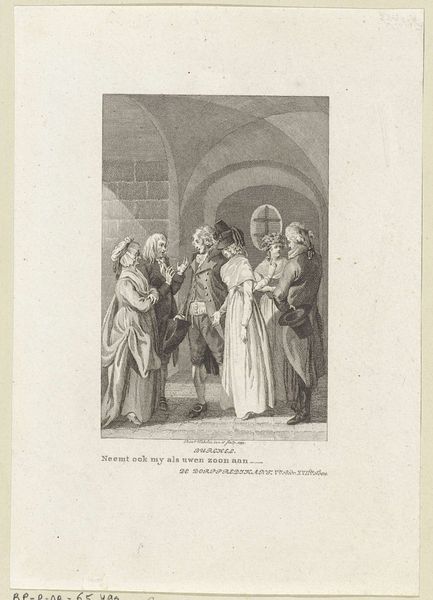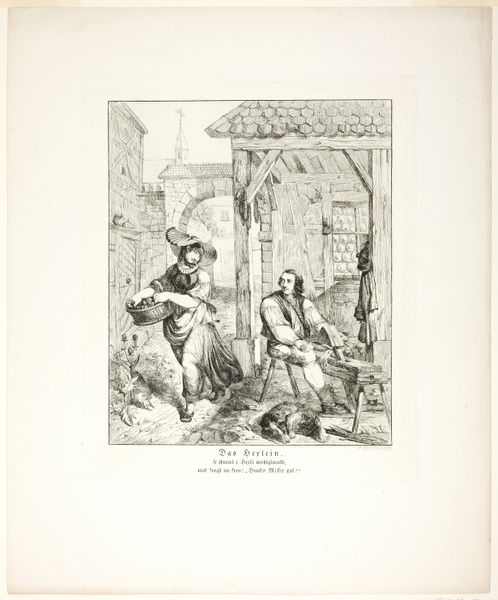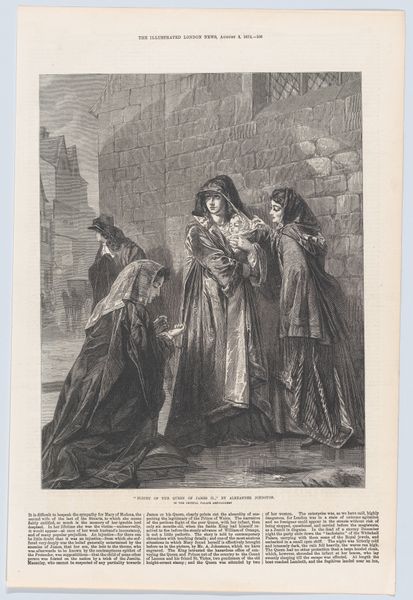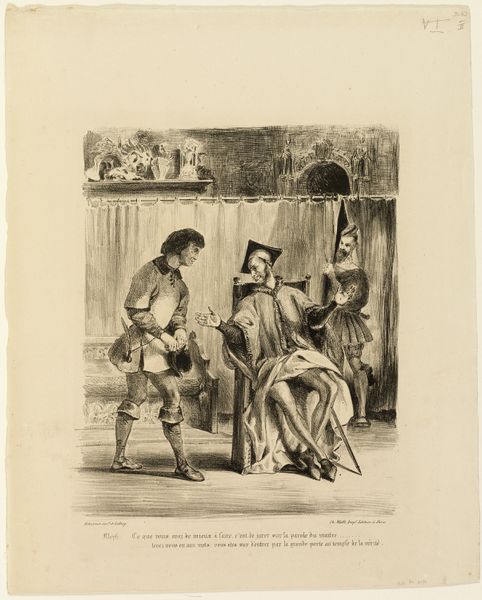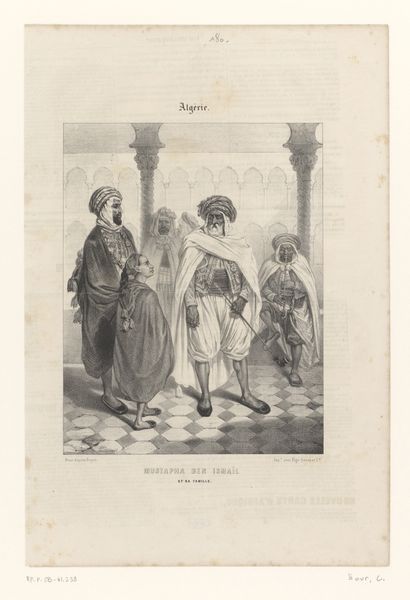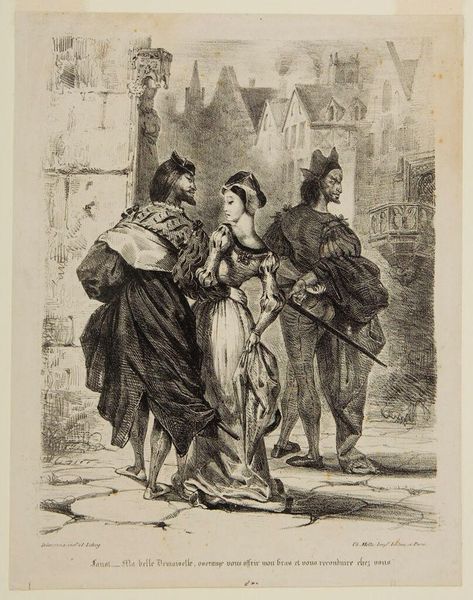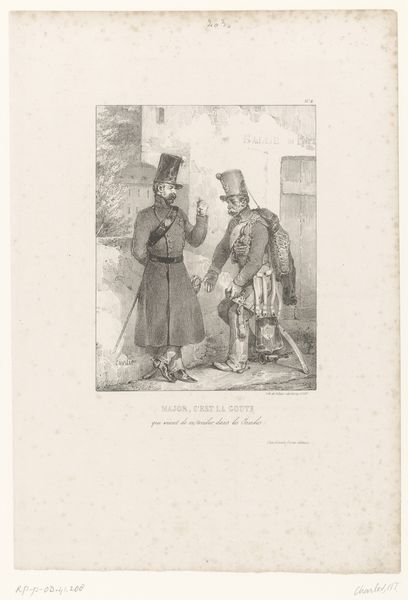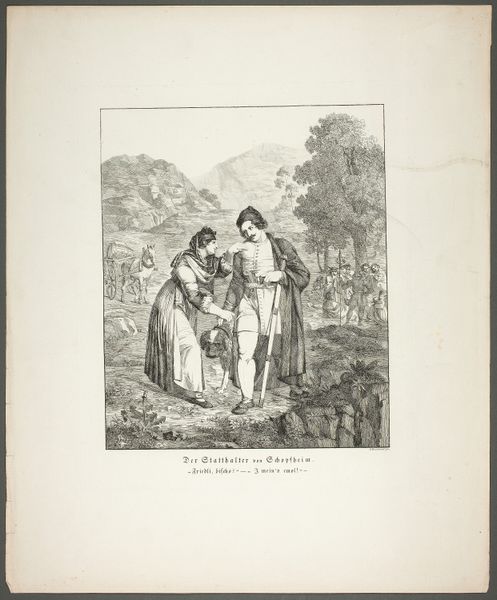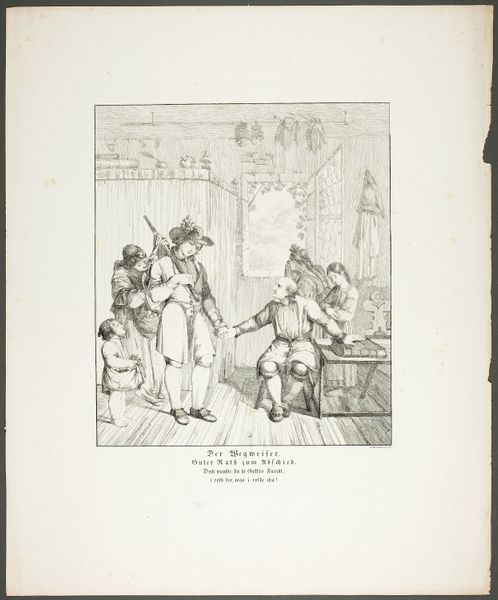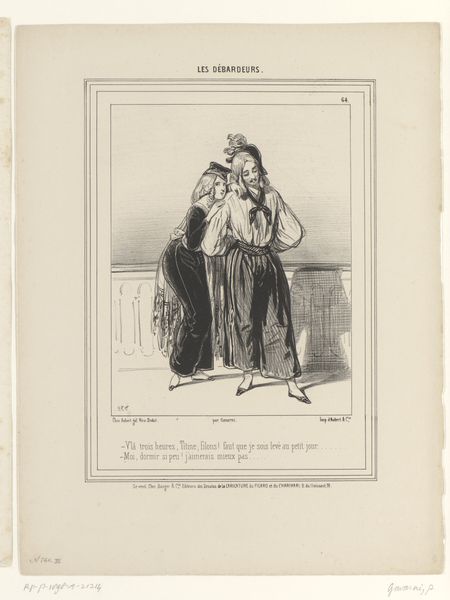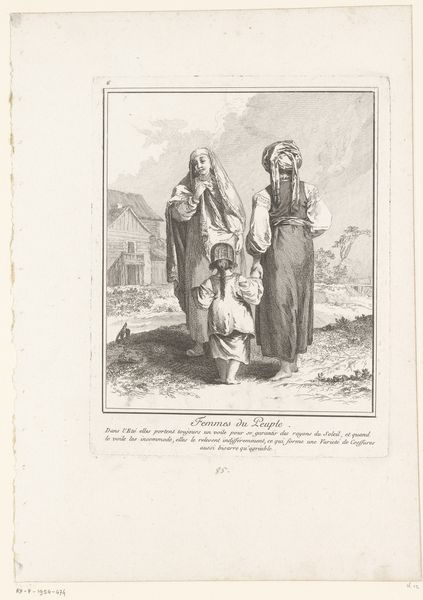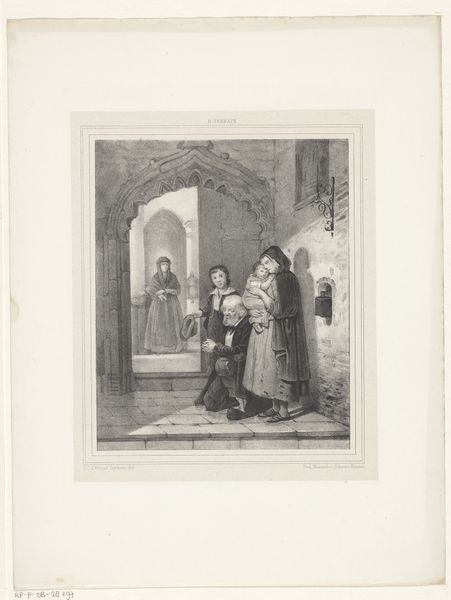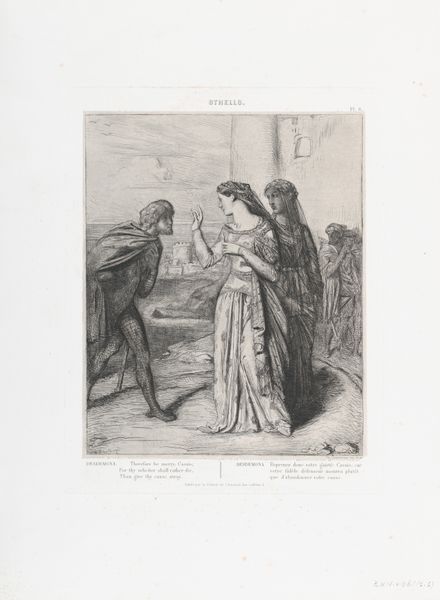
drawing, lithograph, print, paper
#
portrait
#
pencil drawn
#
drawing
#
narrative-art
#
lithograph
# print
#
figuration
#
paper
#
pencil drawing
#
romanticism
#
france
#
history-painting
Dimensions: 268 × 215 mm (image); 428 × 284 mm (sheet)
Copyright: Public Domain
Curator: This lithograph from 1828 by Eugène Delacroix is titled "Faust Trying to Seduce Marguerite, from Faust," an evocative scene captured on paper. Editor: My first impression is one of foreboding, a dark drama unfolding. The delicate lines give it an ethereal quality, but the tension is palpable. Curator: Delacroix, heavily influenced by literary sources, illustrates a key moment from Goethe's "Faust." The composition channels that literary drama, highlighting the inherent symbolism embedded in Faust's quest for forbidden knowledge. It serves as a conduit, relaying an ethical question of mankind, our potential destruction and doom. Editor: Absolutely, and seeing this through a contemporary lens, I'm struck by the depiction of Marguerite as almost a victim of manipulation. We can see power dynamics, particularly those historically affecting women, laid bare here. What societal pressures were in play at the time in creating this very narrative? Curator: Certainly. Romanticism saw the individual as prone to deep passions. Here we see the seductive qualities that stem from this individualized belief—Delacroix gives visual form to this particular aspect of the Romantic psyche, drawing from older symbol systems where temptation leads to ultimate fall. It is no longer about salvation like earlier imagery in illuminated manuscripts; rather, what remains is humanity. Editor: Yes, it highlights that very personal moral dilemma. The dramatic staging amplifies Faust's power and Marguerite’s vulnerability. Even the stark contrast of the black lithographic ink plays into the story: good versus evil. It echoes themes of oppression and the imbalance in agency, urging consideration of the societal structures in the 19th century that allowed such exploitation. Curator: In that regard, it also prompts thinking of the relationship of self-awareness and ultimate fate, reminding me of Jung’s exploration of the shadow archetype. Delacroix makes it clear, though, that the consequences for both individuals are deeply intertwined. Editor: Thinking about these archetypes, perhaps the work functions as both cautionary tale and a mirror. What do we allow to sway us, what is gained, what is lost. The beauty of this lithograph is the lasting relevance. Curator: Indeed, I find its continuous re-examination throughout time an essential aspect of Delacroix’s visual creation. Editor: For me it emphasizes a painful commentary that continues today in matters of gender, and I'm grateful for it, for that reason.
Comments
No comments
Be the first to comment and join the conversation on the ultimate creative platform.
